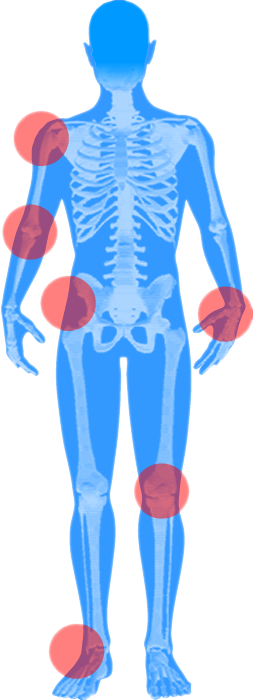We are experts in
replacement surgery.
The Total Joint Center offers comprehensive adult hip, knee, ankle, wrist, elbow, and shoulder replacement surgeries. Our fellowship-trained orthopedic surgeons use advanced prosthetics and technologies for cutting-edge procedures.
SCHEDULE AN APPOINTMENTJoint Replacement Specialists of CT
Our core expertise in joint replacement surgery is unparalleled in the region and newer techniques often allow for replacement surgeries to be performed on an outpatient basis in our state-of-the-art surgical center.
Not all patients who come to The Total Joint Center will require surgery. We always explore nonsurgical options, including bracing and physical therapy, according to the patient’s symptoms, condition, and needs. In addition, we are especially sensitive to treating older patients who have experienced geriatric trauma or are suffering from osteoarthritis, rheumatoid arthritis, or other inflammatory joint diseases.
At OrthoConnecticut, you will find truly personal service. Our treatment philosophy, with care delivered by our highly-trained team of surgeons and rehabilitation therapists, includes an integrated approach to your recovery. Our easily accessible locations offer top-quality care without a commute, making your surgery, recovery and follow up appointments more convenient for you and your whole family.
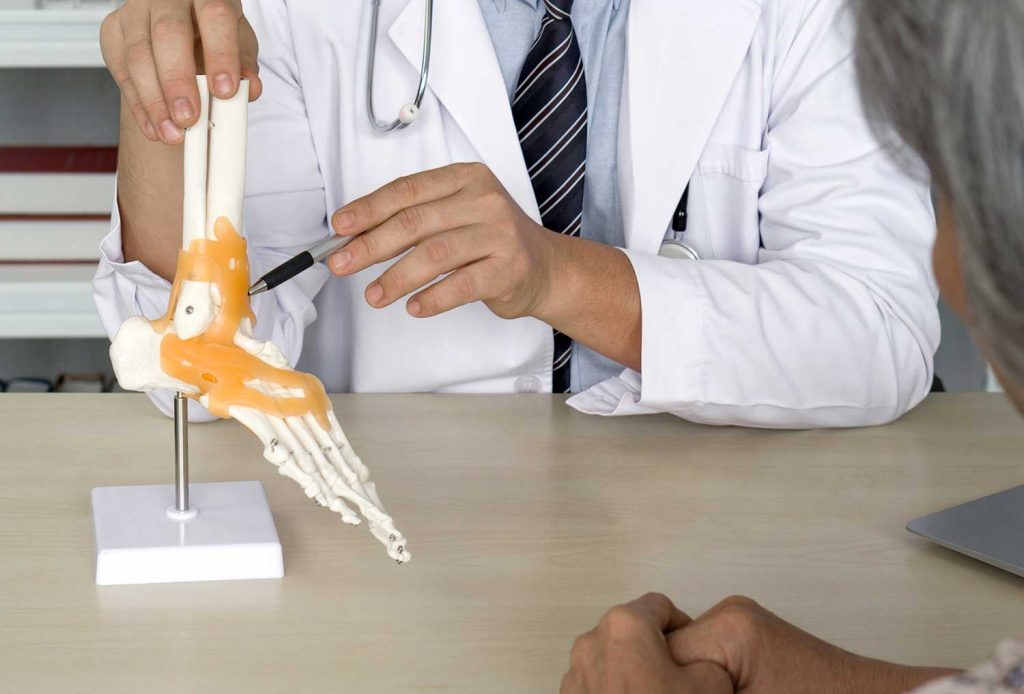
Ankle Replacement Surgery
Arthritis of the ankle is a progressive wearing down of the articular cartilage which results in the bone-on-bone deterioration of the ankle joint surface. Arthritic changes may be a result of normal wear and tear due to aging or from an injury such as a broken ankle or dislocation. The patient with severe ankle arthritis experiences pain combined with a loss of function and mobility, which severely limits their normal activity and quality of life.
When a patient’s mobility is impaired by this form of severe arthritis, and has failed conservative care (such as medication, injections, and bracing) as well as alternative methods of pain control and management, ankle replacement surgery may be the solution. The goal of ankle replacement surgery is to provide pain relief while preserving ankle motion so the patient has less pain and better function during activity.
In this procedure, the surgeon removes the ends of the damaged bones and fits a plastic-and-metal replacement joint onto them. The artificial joint helps the ankle retain more-natural movement, so there’s less risk of arthritis developing in nearby joints. Ankle replacement surgery is generally recommended for healthy people over the age of 60 who have less-active lifestyles. High-impact activities such as running and jumping can damage an artificial ankle. joint. Your physician will discuss the treatment options that best suit your condition and that will offer the best outcome for your particular ankle condition.
Diagnosis and treatment of ankle conditions at OrthoConnecticut ›

Elbow Replacement Surgery
You may not hear too much about elbow joint replacement as it is much less common than knee or hip replacement. However, it is highly successful in restoring mobility and relieving joint pain for those who suffer from a chronic elbow condition.
The elbow is a hinge joint which is made up of three bones:
- The humerus (upper arm bone)
- The ulna (forearm bone on the pinky finger side)
- The radius (forearm bone on the thumb side)
Articular cartilage, a smooth, protective material that covers the surfaces of the bones where they meet to form the elbow joint, enables the joint to move freely. The synovial membrane, a thin, smooth tissue, covers all remaining surfaces inside the elbow joint. In a healthy elbow, the synovial membrane produces a small amount of fluid that lubricates the cartilage and eliminates most friction as the arm bends and rotates. Muscles, ligaments, and tendons hold the elbow joint together.
In total elbow replacement surgery, the damaged parts of the humerus and ulna are replaced with artificial components. The artificial elbow joint, or prosthetic, is made up of a metal and plastic hinge with two metal stems. The stems fit inside the hollow part of the bone called the canal. The mechanism works to help the elbow joint move freely again.
There are different types of elbow and partial elbow replacements, and components come in different sizes. Discuss the options with your physician and review diagrams that will help you better understand this treatment option.
Diagnosis and treatment of elbow conditions at OrthoConnecticut ›
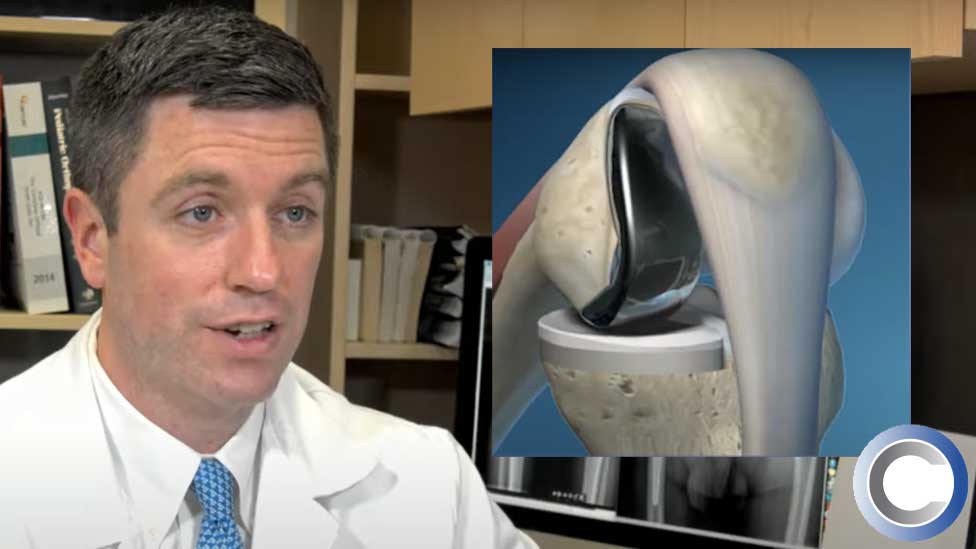
Knee Replacement Surgery (Knee Arthroplasty)
Replacing the knee joint can help relieve pain and restore function in cases where the severely diseased knee causes chronic pain and loss of function. The procedure involves removing the portions of damaged bone and cartilage from the bottom part of your femur (thighbone), top part of the tibia (shinbone) and patella (kneecap), and replacing it with a prosthesis (artificial joint) made of metal alloys, high-grade plastics and polymers.
Your orthopedic surgeon will determine if a knee replacement is right for you by assessing your knee’s range of motion, stability, strength and your ability to perform daily activities and exercise. Diagnostic imaging, such as X-ray and MRI will help determine the extent of damage and the right procedure for your particular diagnosis.
There are a number of knee replacement prostheses available and different types of surgical techniques. You and your physician will discuss the options, based on your age, weight, activity level, knee size and shape, and overall health.
The Total Joint Center is a proud leader in the full range of knee diagnosis, treatment and replacement surgery. Our team of board-certified, fellowship-trained orthopedic surgeons and sports medicine specialists have specialty training in the discipline, and perform leading-edge procedures using the latest surgical technique and prosthetics. In addition to total and partial knee replacement surgery, as well as ACL reconstructive surgery and knee fracture repairs, we also offer minimally invasive arthroscopic knee surgery for non-trauma conditions. Your physician will be happy to discuss the best treatment alternative for your individual condition.
Diagnosis and treatment of knee conditions at OrthoConnecticut ›
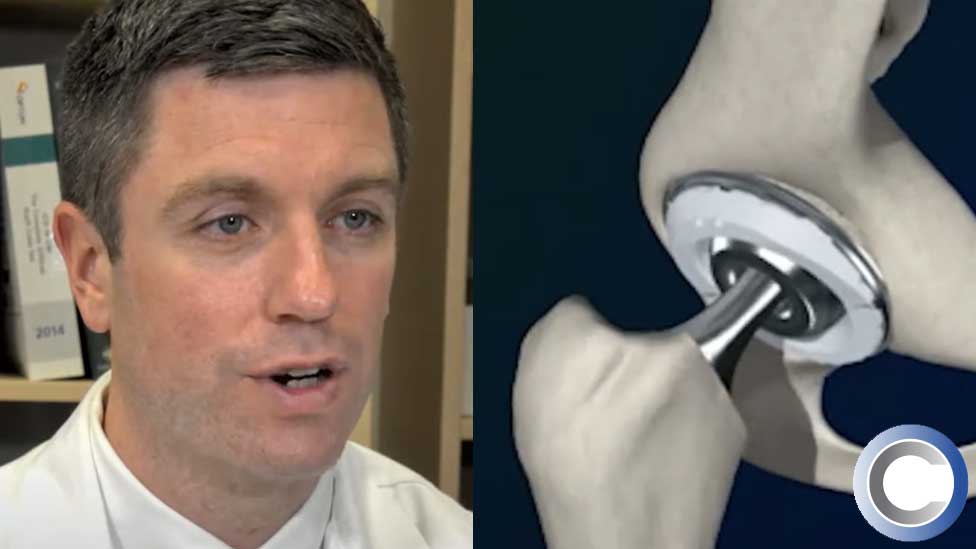
Related Resources
- Diagnosis and Treatment of Hip & Thigh Conditions at OrthoConnecticut
- Athlete Returns to Sports After Bilateral Total Hip Replacement
- What Approach is Used for Hip Replacement Surgery?
- What is Anterior Approach Hip Replacement Surgery?
- What is a Hip Replacement Surgery and What Bearings are Used?
- What Device Will be Used in my Hip Replacement?
Hip Replacement Surgery (Hip Arthroplasty)
The Total Joint Center is a leader in the full range of adult hip replacement surgery, including partial and full replacement surgeries. Our team of board-certified, fellowship-trained orthopedic surgeons have advanced sub-specialty training in hip diagnosis, treatment and replacement surgery, and perform leading-edge procedures using the most modern technique, tools and prosthetics available today.
During hip replacement, your surgeon removes the damaged sections of your hip joint and replaces them with implants typically constructed of metal, ceramic and/or very hard plastic. This artificial joint (prosthesis) functions like a natural hip joint, providing normal motion and improved function, while minimizing pain.
Hip replacement surgery may be an option for you if your hip pain interferes with daily activities, more-conservative treatments are not effective and pain persists. The majority of patients who elect replacement surgery do suffer from pain related to joint damage from arthritis.
Several conditions can contribute to damaged hip joints, and include:
- Osteoarthritis: Osteoarthritis damages the smooth cartilage that covers the ends of hip bones which helps joints move effortlessly.
- Rheumatoid arthritis: Rheumatoid arthritis, caused by an overactive immune system, produces a type of inflammation that can erode cartilage and occasionally the underlying bone, resulting in damaged and deformed joints.
- Osteonecrosis: Osteonecrosis occurs when there is insufficient blood supply to the ball portion of the hip joint, causing the bone to collapse and in some cases become deformed.
Patients who consider hip replacement surgery, often experience debilitating pain that persists, despite the use of pain medications, worsens with walking and inhibits climbing or descending stairs, interferes with sound sleep, and causes difficulty rising from a seated position.
Diagnosis and treatment of hip conditions at OrthoConnecticut ›
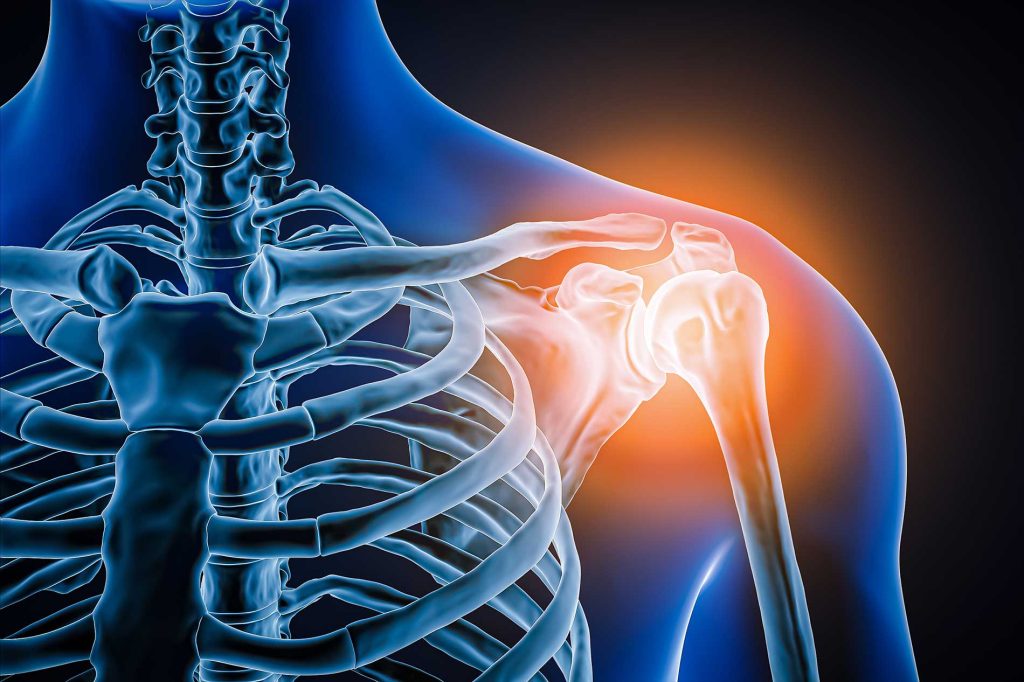
Shoulder Replacement Surgery
The shoulder is the most moveable and flexible joint in the body, which also means it’s one of the most fragile. It is a ball and socket joint comprised of three bones: the humerus (upper arm bone), the scapula (shoulder blade) and the clavicle (collarbone). The touching surfaces of the bones covered with articular cartilage, a smooth substance that protects the bones and enables them to move freely. The synovial membrane, a thin, smooth tissue, covers all remaining surfaces inside the shoulder joint. In a healthy shoulder, this membrane makes a small amount of fluid that lubricates the cartilage and eliminates almost any friction in your shoulder. Muscles and tendons around the joint provide critical stability and support. This shoulder anatomy provides the greatest range of motion of any joint in the human body.
Several conditions can cause shoulder pain and disability and motivate patients to consider shoulder joint replacement surgery. Osteoarthritis (degenerative joint disease), rheumatoid arthritis, post-traumatic arthritis following a serious shoulder injury or fracture, a long-standing rotator cuff tear, Avascular Necrosis (Osteonecrosis) and severe fractures can all be reasons to consider shoulder joint reconstruction and replacement surgery.
Although shoulder joint replacement is less common than knee or hip replacement surgery, it is just as successful in relieving joint pain. During surgery, the damaged parts of the shoulder are removed and replaced with artificial components known as a prosthesis. The treatment options are to either replace just the head of the humerus bone (ball), or replacement of both the ball and the socket (glenoid). Your physician will discuss the different surgical treatment options and techniques with you and explain the high function of today’s state-of-the-art prosthetics. The right procedure depends on your age, level of activity, severity of your shoulder pain or arthritis and goals for future mobility.
Diagnosis and treatment of shoulder conditions at OrthoConnecticut ›

Wrist Joint Replacement (Wrist Arthroplasty)
Wrist arthroplasty is also a less common procedure but is a good option for patients who have painful arthritis that does not respond to other more conservative treatments. In wrist joint replacement surgery, as with other types of joint replacement surgery, the damaged parts of the wrist bones are removed and replaced with an artificial joint (prosthesis).
On the hand side of the wrist, there are two rows of bones at the base of the hand, and four bones in each row, and these are called the carpals. In the forearm, the radius and the ulna are the two bones that form a joint with the first row of carpals. Cartilage, an elastic tissue, creates a smooth surface that enables these bones to move easily when they move against one another.
As with other joints, when the cartilage deteriorates or is damaged by injury, infection, or disease, the bones themselves will rub against each other causing a wearing out of the ends of the bones. This causes a painful, arthritic condition, known as osteoarthritis. Rheumatoid arthritis, another form of arthritis, is a chronic inflammatory disease resulting in pain, stiffness and swelling of the joints. It can affect the strength of the fingers and hand, making it difficult to grip, pinch and perform daily functions.
Patients with severe arthritis, debilitating pain and decreased wrist function are good candidates for wrist replacement surgery. Replacement surgery is intended to relieve pain and improve function in the wrist and hand, enhancing the patient’s ability to perform daily activity. New prosthetic design mimics wrist anatomy and function, and utilizes components made of metal and high quality plastic (polyethylene). Your physician will be happy to discuss the various options available today and show you exactly how the implant will be inserted and function after surgery.
Wrist joint replacement can be done as an outpatient procedure and is often combined with other hand procedures to correct deformities or disorders in the tendons, nerves, and small finger joints, and thumb. Following surgery, patients wear a cast and then a protective splint. Pain relief is immediate and exercises will need to be performed over time to restore movement and, eventually, to increase strength and endurance. Your physician will discuss the proper physical therapy protocol to address your individual surgical procedure and recovery.
Diagnosis and treatment of wrist conditions at OrthoConnecticut ›
Frequently Asked Questions About Joint Replacement:
What is the Most Common Joint Replacement Surgery?
Is Joint Replacement Major Surgery?
How Successful are Joint Replacements?
Joint replacement surgery is highly successful, and most patients can enjoy renewed mobility for many years.
How Long is the Recovery Time After Joint Replacement Surgery?
What are the Risks of Joint Replacement?
What Happens During Joint Replacement Surgery?
Will I Need Physical Therapy after Joint Replacement?
Call OrthoConnecticut today at 1.833.678.4628 to learn more or to schedule an appointment.

